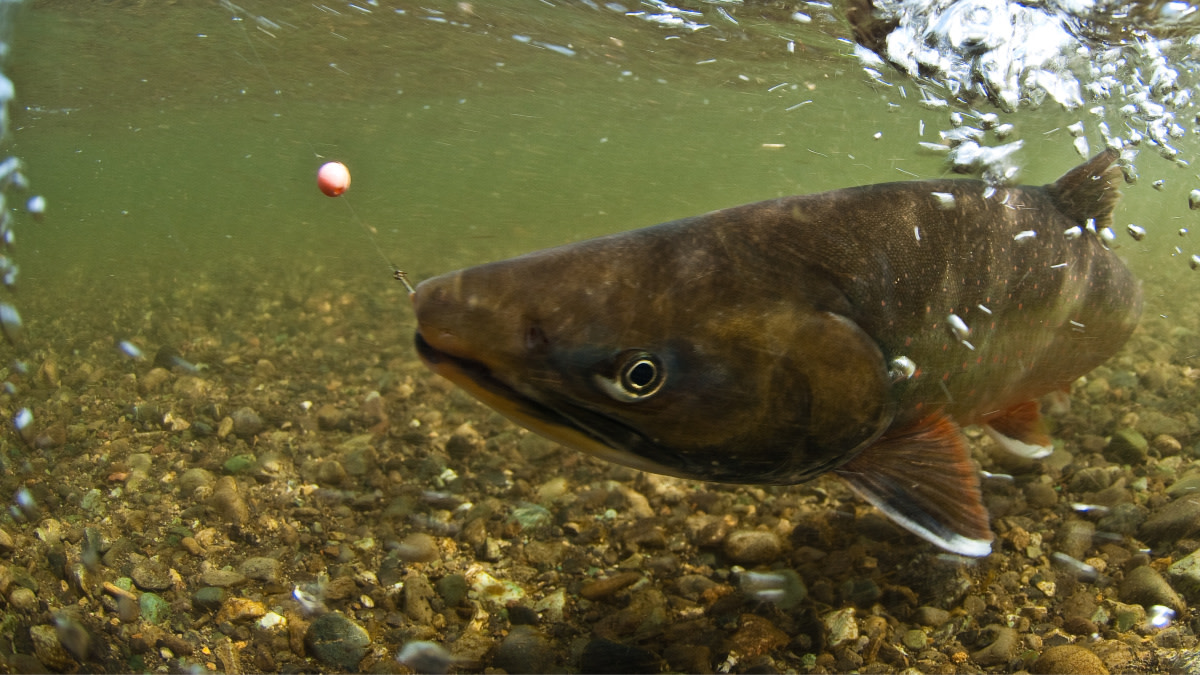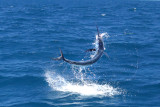
I caught the fishing bug early. As a kid, method didn’t matter. I used ultralight spinning rods and bait for panfish, suckers and carp; heavy spinning gear and lures for bass and salmon; and a fly rod for stocked trout—because those were the best ways to catch fish. And as long as I was catching fish, I was happy.
By college, I often left the spinning gear behind. A decade later, I was a die-hard fly fisherman who paid my bills by guiding people on some of Colorado’s best trout rivers.
When I wasn’t guiding, I spent every spare dime traveling to far flung fly fishing destinations—tarpon in the Keys, permit in Belize, roosterfish in Baja, bull trout in Montana, steelhead in Michigan. After all that time in all those different waters, I learned that fly fishing really is the most effective way to catch certain fish in particular situations: spooky bonefish slithering around in six inches of water and wary brown trout sipping tiny mayflies in clear rivers come to mind.
But even when fly fishing wasn’t the most effective way to catch fish, I shunned other methods. For me, the yardstick of fishing success measured exactly the length of a fly rod. Anyone could catch fish with bait or lures, I reasoned, but a fish caught on a fly rod was to be held in higher esteem.
Sometimes this mindset became problematic. I still wanted to catch fish, after all, and a fly rod wasn’t always the best tool for the job. I found myself engaging in methods that made me question when, exactly, was fly fishing no longer fly fishing.
For instance, in the offshore bluewater of Baja, Mexico and the Outer Banks of North Carolina, I’ve caught dorado, roosterfish, cobia, bonito, sharks and other species by casting baitfish imitations on a fly rod. The thing is, in order to first find the fish in the middle of the ocean and then get them close enough to catch on fly, it was necessary chum them into a feeding frenzy with live sardines and frozen blocks of ground up baitfish.
Fly fishing has long been plagued by shifting conceptions of purity and hierarchies of method. Chumming fish to the surface before casting a fly to them may seem pretty ham-fisted, but it’s a hell of lot of fun. I’ll do it again, and I’m far from the only fly fisherman who has gone to arguably outlandish lengths just to be able to say they caught a fish on a fly rod. Here are some more examples where some long-held notions of fly fishing’s purity are challenged by myself and many other anglers.
Spaghetti and Meatballs
Two of the most maligned trout flies (glo-bugs and San Juan worms) imitate trout eggs and earthworms, respectively. Fished in tandem, especially during spring and fall spawning seasons or during high water, there’s nary a trout in the river that can resist this combination of flies that are often referred to as “spaghetti and meatballs.”
Some fly fishing purists consider spaghetti and meatballs unethical, devious and nearly akin to bait fishing. I know some fly fishermen who will only use eggs and worms when the fishing is slow and no other anglers are in sight. Others consider it a hanging offense.
I’m not one of them. But I’ll admit, I can’t bring myself to use the new wiggly, rubber worm “flies” for trout. I associate rubber worms with great big, barbed hooks lodged in the jaws of fat largemouth bass getting yanked out of the water on oversized tackle. Maybe I’m stereotyping, but we all draw our own lines in the sand.
The Florida Keys Soak
Florida Keys bonefish and permit are notoriously difficult to catch on artificial flies, but toss them a live shrimp or crab and they eat with reckless abandon.
A good friend’s brother, who loves fly fishing but can only be described as a mediocre fly caster, called from Florida a few years ago to let us know he’d caught several large bonefish and a couple smallish permit on half-day guided trip out of Key Largo. Having fly fished in the Keys several times, my good friend and I were both incredulous, but he texted us the pictures to prove it.
We were overcome by our own sense of superiority and elitism. How could this guy, who we deemed to be a far lesser angler than either of us, catch more fish in a morning of fishing than we’d caught on fly in half a dozen trips to the Keys?
The truth eventually came out, and it smelled like bait. My friend’s brother shared his guide’s failsafe technique for bad fly casters and fish with lockjaw—soaking the flies in a bucket of smashed up crabs and shrimp before hitting the water.
That’s going a step too far for me to consider anything that follows to be fly fishing. Rather than casting a fly soaked in crab puree, I’d rather skip the pretense and use a spinning rod baited with a live crab.
The Old Bait and Switch
Offshore saltwater anglers troll large squid lures and harnessed baitfish for sailfish and marlin. Catching one of these blue water behemoths on a fly, however, requires a bait and switch.
By trolling a hookless plug or squid rig tipped with a ballyhoo baitfish, captains “raise” billfish from the depths into close proximity behind the boat. They then reel in the lure with the food-focused billfish trailing close behind. The fish is thus “teased” into fly casting range. The mate yanks the hookless setup out of the water, and the angler quickly replaces it with a big fly that looks close enough to the teaser rig that the angry fish immediately crushes it.
Let’s be honest here, when an aggressive billfish is fired up and chasing the teaser rig, “presenting” the fly to the fish right off the transom requires little skill. Sometimes dropping the fly into the motor’s backwash, paying out some line and trolling the fly is all that’s needed to get the sailfish or marlin to grab it.
There’s no doubt billfishing this way is fun, exciting and visual, but the only thing that distinguishes it from trolling with conventional gear is the extraneous addition of a fly rod. It’s really about the angler being able to say they hooked, and hopefully “leadered,” or landed, a billfish on fly gear. Maybe there’s something I’m missing, but the whole thing strikes me as a slightly silly charade. It also sounds like a ton of work to wrestle some of the most powerful aquatic creatures on Earth with a 1:1 gear ratio. Still, this is about the only option anglers have to catch giant billfish on fly gear.
Bows and Beads
Alaska’s rainbow trout fishery is a lifetime destination trip for many anglers. The rainbows there grow very big on a steady diet of fatty salmon eggs. Naturally, a good fly choice is an egg pattern. I know I’ve already covered egg flies, but they do things a little differently up in Alaska.
The most popular egg “flies” there are plastic craft beads that exactly mimic the size and color of the eggs salmon deposit in the streambed. They’re virtually indistinguishable from the real thing, and therefore highly effective.
The bead is often pegged to the leader with a toothpick no more than two inches above a bare hook. Lead splitshot get the bead down into the water column. A strike indicator (a fancy fly fishing term for a bobber) is attached to the leader several feet above the weight. When the rainbow eats the bead, the bobber bobs, the angler sets the hook, and the hook slides into the corner of the trout’s mouth. All an angler has to do is find a big rainbow working the egg train below some spawning salmon and start dredging.
Chucking a bead, a bunch of lead weights and a bobber lacks the finesse and beauty that I appreciate about fly fishing. And to me, it’s questionable to consider a hookless plastic bead a “fly.” Semantics aside, the whole setup reminds me of how I fished for stockers as kid with a spinning rod and a jar of Uncle Josh’s cheese flavored salmon eggs.
We are, however, talking about giant, native, wild rainbows in some of the most pristine rivers in the world. I can see the attraction.
Maybe the next time I’m in Alaska I’ll give it a try. But only after I’ve filled a cooler with tasty fish like halibut, rockfish and salmon that I catch with—gasp—conventional gear, lures and bait.
You see, I’ve long since fallen off the fly-fishing-only wagon. The fishing gear or techniques an angler uses are just a means to an end, and none of them are right or wrong. As long as you’re having a good time and being respectful to the resource, fish however you like.
Myself, I’m past the point of fly fishing just to prove a point. The next time I’m in Baja and the guide starts chumming live sardines and a hungry roosterfish or dorado shows up, I’ll have to decide whether to cast a fly or just pitch a live bait on a hook. Either way, it’ll be damn fun.
Feature image via Tosh Brown.





